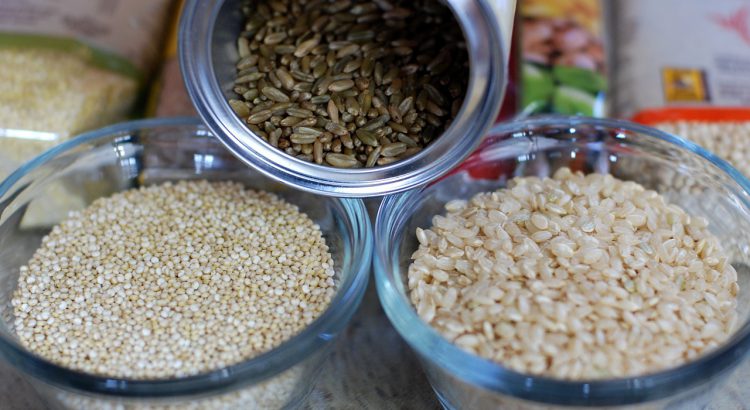There’s a lot of talk about the importance of whole grains as part of a healthy diet, but do you know how to identify whole grains?
To be classified as a whole grain, 100 percent of the kernel must be used, which contains the bran, endosperm and germ.
When shopping for whole grains, be sure to read the ingredients. Many products labeled as multi-grain, stone-ground, 100 percent wheat or bran may sound healthy, but may not contain whole grain ingredients.
Look for foods that list 100 percent whole wheat or 100 percent whole grain first in the ingredients list. Individuals can also refer to the Whole Grains Council stamp, which can be found on more than 10,000 products worldwide. The Whole Grains Council is a non-profit advocacy group, and its stamp is an indicator that guarantees that the product provides at least half a serving of whole grains and indicates if the product is 100 percent whole grain or contains whole grains.
The United States Department of Agriculture (USDA) Dietary Guidelines for Americans recommends that individuals should make at least half of their grain choices whole grain.
Whole grains — such as barley, oats, wild rice and quinoa — are great source of protein, fiber, vitamins and minerals. They are not stripped of nutrients like refined products that contain only the endosperm. Refined products, such as rice, pasta and wheat flour, lack fiber and may be enriched to replace nutrients lost during production.
To make half of your grains intake whole grains, adults should aim to consume at least three one-ounce servings, or 48 grams, of whole grains daily. One slice of bread, ½ cup cooked oatmeal or 1 cup of ready-to-eat cereal qualifies as a 1-ounce (16 gram) serving. Regularly consuming whole grains may reduce the risk of heart disease, stroke and diabetes and is beneficial for weight management and gastrointestinal health.
It is easy to incorporate whole grains into your diet. When baking, substitute half the enriched white flour called for in the recipe with whole grain flour. Swap enriched pasta for 100 percent whole wheat pasta or quinoa, or add barley or wild rice to soup instead of white rice.
Your local grocery store now has more whole grain options that ever before. Look for barley, millet, whole rye, bulgur, wheat berries, buckwheat or farro the next time you shop and give them a try.
Try these whole grain recipes:
Toasted Millet with Cilantro Vinaigrette
Overnight Honey-Almond Multigrain Cereal
